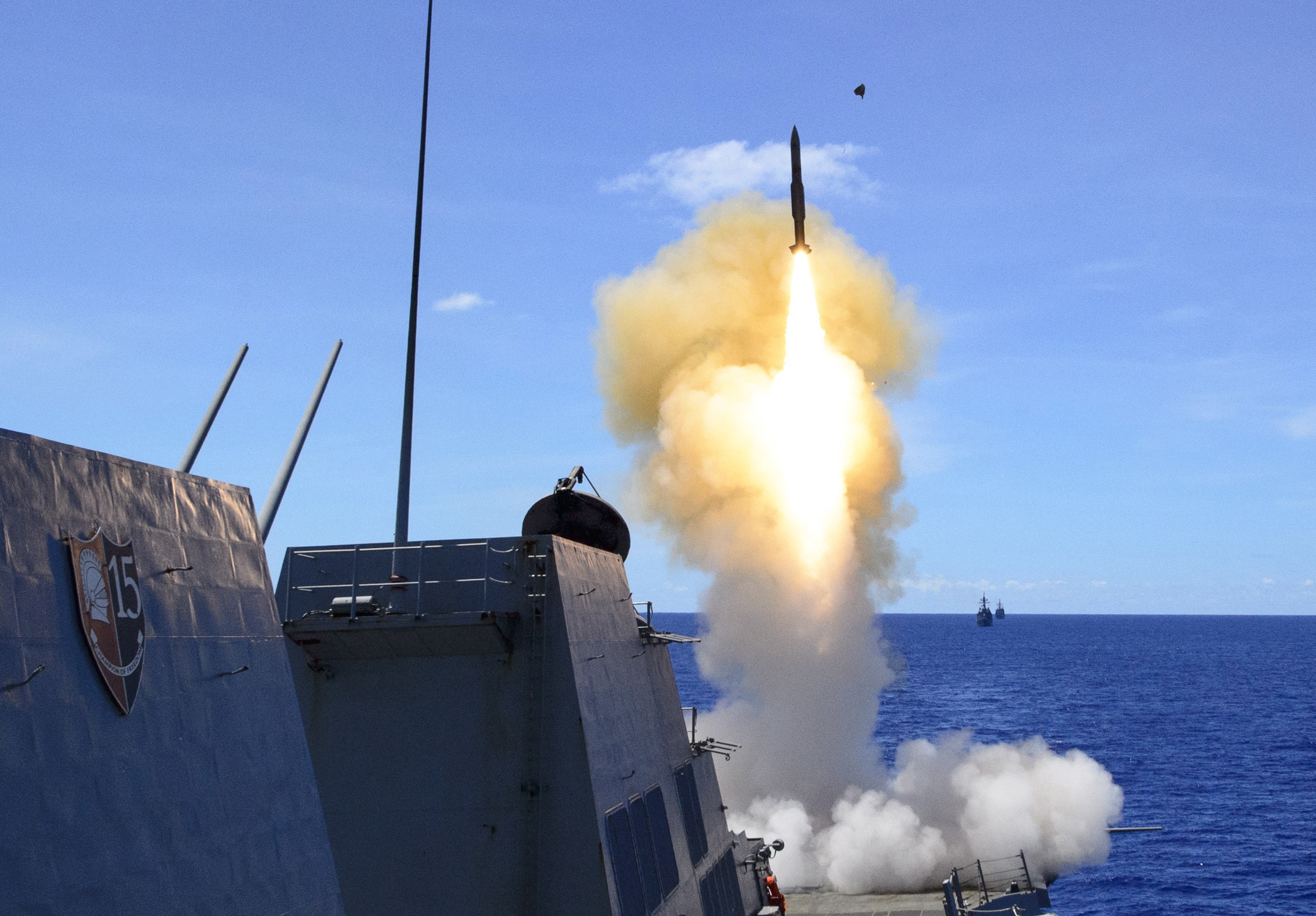
Raytheon Missile System in Tucson has been awarded $578,3 million to procure Standard Missile-2 (SM-2) production requirements, according to the U.S. Department of Defense contract announcements.
The deal, which was a modification to a previous contract, covers all up rounds, instrumentation kits, engineering services and spares; and to definitize the long-lead-material undefinitized contract action in support of the Navy and the governments of Korea, Denmark, Taiwan, Netherlands, Spain, Chile, Japan and Germany.
The full announcement also noted that: “Foreign Military Sales (FMS) (Korea) funds in the amount of $231,687,410 (40%); FMS (Denmark) funds in the amount of $97,952,805 (17%); FMS (Taiwan) funds in the amount of $57,583,218 (10%); Memorandum Of Understanding (Netherlands) funds in the amount of $52,977,595 (9%); FMS (Spain) funds in the amount of $50,199,713 (9%); fiscal 2021 weapons procurement (Navy) funds in the amount of $36,789,237 (6%); FMS (Chile) funds in the amount of $33,078,183 (5%); FMS (Japan) funds in the amount of $10,808,242 (2%); FMS (Germany) funds in the amount of $4,968,817 (1%); and FMS (Australia) funds in the amount of $2,268,957 (1%) will be obligated at time of award and will not expire at the end of the fiscal year.”
Raytheon says the Standard Missile-2 is the world’s premier fleet-area air defense weapon, providing superior anti-air warfare and limited anti-surface warfare capability against today’s advanced anti-ship missiles and aircraft out to 90 nautical miles.
The SM-2 variants include radar seeker technologies in continuous wave and interrupted continuous wave guidance modes, tail controls and solid rocket motor propulsion to engage high-speed maneuvering threats and updated radar targeting and directional warheads.
Block IIIB enhances its predecessor’s capabilities by adding autonomous infrared acquisition. The U.S. Navy plans to use this variant through 2035.